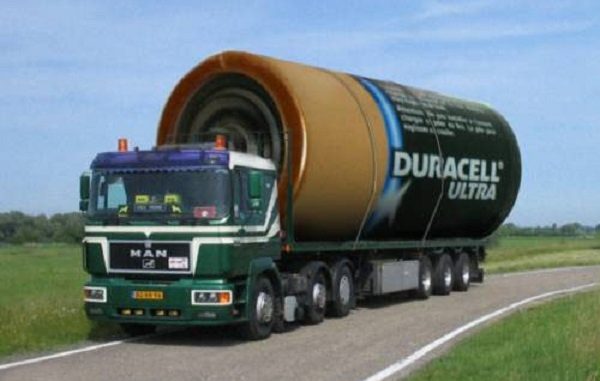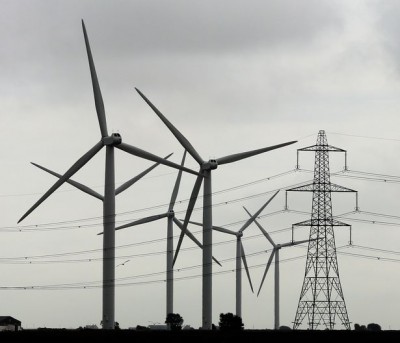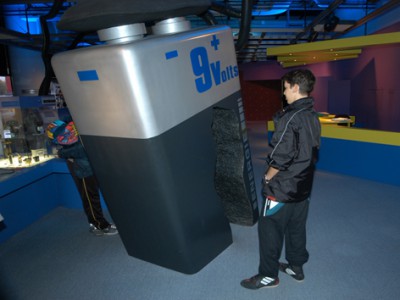
Mythical storage system on the road to nowhere…
One of the more hilarious moments that followed the aftermath of South Australia’s statewide blackout on 28 September (aka ‘Black Wednesday’), was when The Australian quoted the CEO of French wind power outfit Neoen – one of the wind power operators whose turbines were responsible for SA’s date with the Dark Ages:
Neoen Australia managing director Franck Woitiez, whose turbines at Hornsdale wind farm shut down as part of the system trigger, said the statewide blackout was caused by the storm. With his wind farm now back in full operation, he cautioned against a kneejerk response to the black out. “Battery storage has a huge part to play in our system going forward and we need to keep viewing renewables as part of our energy mix,” Mr Woitiez said.
For the record, battery storage plays no part in South Australia’s power supply; nor does the grid-scale storage of electricity play a part in the delivery of electricity anywhere in the world.
Wind industry hucksters, like Franck Woitiez, continue to chant the ‘battery technology is rapidly improving’ mantra, as if truckloads of giant batteries will soon magically rain down from heaven; and, thereby, save the wind industry from its imminent and inevitable demise.
What occurred in South Australia in November 2015 and July and September this year, and what will continue to occur, has alerted all and sundry to the fact that wind power is a heavily subsidised vanity project; an utterly meaningless power source, which destroys and divides peaceful rural communities, wrecks property values and slaughters millions of birds and bats with impunity.
Australia’s so-called ‘wind power capital’, South Australia is, rather than running on perfectly benevolent breezes, in fact heavily reliant upon coal-fired power, delivered from Victoria’s Latrobe Valley via a pair of interconnectors: Heywood in the south-east and Murraylink in the Riverland.
Already suffering from spiralling retail power prices, routine load shedding and mass blackouts whenever wind power output collapses on a total and totally unpredictable basis, with the predicted closure of Victoria’s 1,600MW Hazelwood plant, South Australians can expect plenty more of the same in future.
Which brings us back to the guff about batteries promising wind industry salvation.
Not only is there NO grid-scale storage of electricity anywhere in the world, the bulk battery storage of wind or solar power sits in the same category as turning lead into gold and the ever elusive perpetual motion machine: an enticingly lucrative but unachievable myth.
Battery power unviable alternative to traditional energy sources
The Times
Matt Ridley
24 October 2016
If only we could store electricity many of our energy problems would be over, but we are miles away from cracking that.
Batteries are no longer boring. Whether catching fire in Samsung Note 7s, being hailed as the answer to future electricity grids thanks to breakthrough chemical innovation, or being manufactured on a gigantic scale in Elon Musk’s gigafactory in Nevada, batteries are box office. And though battery technology is indeed advancing by leaps and bounds, there is a considerable quantity of balderdash being talked about it too.
If only we could store electricity! Then we could make it in the summer sun and on windy days, for use on cold winter nights. All right, let’s do a simple calculation. Britain uses about a terawatt-hour of electricity during an average winter day.
If we wanted to store just two days’ worth of power, after making almost all transport and heating run on electricity — for that’s the plan, remember — then we would need nearly ten times as many car and lorry batteries as there are on the entire planet. (I borrowed this calculation from a similar one for Germany by the physicist Clive Best.)
Yes, but we would not use car batteries; we would use bigger units, and more efficient and newer lithium-ion batteries. All right, let’s buy Tesla Powerwalls instead.
We would need 160 million of them to cover a day’s consumption, or 3.3 billion to cover a week when we’ve electrified heat and transport too. They retail for $3000, so that’s about 8 trillion pounds ($12.8 trillion).
For a system that would only rarely be needed in full. Maybe we could get a discount.
You begin to see why nuclear and gas make sense. But even if you only stored enough juice to turn our existing fleet of wind turbines into reliables — able to provide baseload electricity on demand — the cost would still be huge.
The late David MacKay, former chief scientist at the Department of Energy and Climate Change, in his invaluable book Sustainable Energy — Without the Hot Air, reckoned that about a terawatt-hour of storage would be needed to turn 33 gigawatts of wind capacity into a reliable source. That implies that we would need 400 gigawatt-hours of batteries to turn today’s 14GW of wind capacity into 4GW of electricity on demand: which would cost north of 130 billion pounds ($209bn) today.
Yes, but the price is coming down. That’s true. Battery costs have more than halved in about five or six years. One study says: “Industry-wide cost estimates declined by approximately 14 per cent annually between 2007 and 2014, from above 1000 dollars per kWh to around 410 dollars per kWh.”

Wind farms are touted as an alternative energy sources.
However, that’s still an awful lot more expensive than the principal current method of storing energy: in oil tanks, gas tanks, piles of coal and even the fuel tanks of vehicles, plus to a much lesser extent by pumping water uphill in Wales. Such methods of storing energy both cost and waste very little. (I declare my commercial interest in coal, as usual.)
Perhaps, since we are all going to drive electric cars, we can store electricity in the batteries of our electric cars: plug them in and the grid could draw down the power during times of peak use when the wind does not blow.
Well, if all Britain’s cars were electric they would store less than a day’s worth of power — and they would mostly be plugged in at night when demand for electricity is at its lowest. Besides, I don’t imagine people would be too happy to wake up and find their car’s flat because it was not very windy last night.
There is a further problem. Any energy technology must generate more energy over its lifetime than was used in its manufacture and operation, by a ratio of at least seven, otherwise it is a waste of money. This is known as energy return on energy invested.
The oil coming out of an oil well, or the electricity from a wind turbine must be much more than will be used in drilling the next well or making the next turbine: because it has to provide useful energy to the economy too, and to provide people with the wherewithal to build and repair machines and structures.
It’s believed that medieval agrarian economies teetered close to the brink of this energy return threshold, getting not much more energy out of a windmill or food from a cornfield than had gone into it in terms of muscle power.
By this measure, solar power is actually negative and makes no sense at all in cloudy Britain, and nor does growing biofuels, since the tractors and chemicals use up about as much energy as is produced from the crop.
According to a German study, wind power is viable by this measure, but not if you factor in the energy needed to store electricity to make it reliable, at which point it fails the test — and that’s assuming pumped water-storage, which is much cheaper than batteries.
You could deduce from all this not that it’s unaffordable but that there’s going to be huge, if not limitless, demand for batteries, especially if they get more efficient. Mr Musk’s investors are betting big on batteries. His Nevada gigafactory, built as a joint venture with Panasonic, is expected to cut the cost of batteries by 30 per cent and will produce 50 gigawatt-hours of batteries a year by 2018, enough to power Britain for 20 minutes if we electrify heat and transport. Other giga-scale battery factories have already opened in Asia.
There is no doubt that production of batteries has increased dramatically and batteries are going to be playing a big part in our lives, even without trying to store grid electricity. And no, we are not going to run out of lithium.
According to the Los Angeles Times, Mr Musk has had $US4.9 billion ($6.45bn) of subsidies for his three main ventures: Tesla Motors, SolarCity (now bought by Tesla) and Space Exploration Technologies. He has yet to turn a profit and the losses are growing: some analysts think Tesla is burning through $US1bn a quarter.
American taxpayers had better hope they have not been investing in a pyramid scheme. Enron, too, used to boast about its green credentials.
Here in Britain, you get a bribe of up to 4,500 pounds from the government if you buy an electric car, so it’s no wonder that motor manufacturers are rushing to open factories. In terms of noise and pollution, electric vehicles clearly make a lot of sense.
However, their cost is still huge, and their Achilles heel is the long time it takes to recharge.
That’s a problem on the way to being solved, but not without risk: there seems to be evidence that it is rapid charging that increases the risk of internal shorting and this may be one of the problems within the Samsung batteries, leading to melting, oxygen release and explosion.
The Times

If I kick it, does it explode like a Samsung 7?


